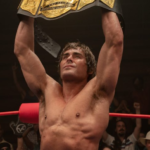
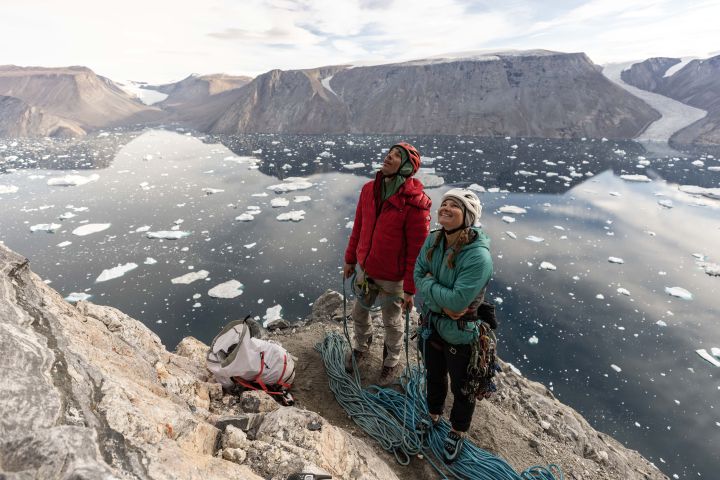
If you’re new to climbing, your first introduction to Alex Honnold likely came in 2018’s Free Solo, the Oscar-winning documentary from Elizabeth Chai Vasarhelyi and Jimmy Chin. Free Solo depicts Honnold’s pursuit to become the first climber to free solo El Captain (El Cap) in Yosemite National Park. Free soloing means no rope, so Honnold scaled a 3,000-foot wall with climbing shoes and chalk. Free Solo is one of the most inspiring and anxiety-inducing documentaries about the human spirit. Honnold’s groundbreaking accomplishment does beg the question of how he can top it.
Honnold is unsure how he’ll ever top Free Solo. However, the 38-year-old has found a new purpose for climbing, or as he puts it, a way to do “something useful in his life.” In 2022, Honnold traveled to Eastern Greenland to climb Ingmikortilaq, one of the world’s tallest unclimbed natural monoliths. Before attempting the first ascent of a wall 1,000 feet higher than El Cap, Honnold and a team of experts embark on a scientific expedition revolving around climate change research. Honnold’s team included world-class climbers Hazel Findlay and Mikey Schaefer, glaciologist Dr. Heïdi Sevestre, Greenlandic guide Adam Kjeldsen, and renowned adventurer Aldo Kane.
The excursion was captured on film and became Arctic Ascent with Alex Honnold, a three-part docuseries premiering February 4 on National Geographic. In conversation with Digital Trends, Honnold talks about finding purpose after El Cap, tackling the Greenland expedition, and the challenges of scaling Ingmikortilaq.
Note: This interview has been edited for length and clarity.
Digital Trends: I want to start with something your wife, Sanni, said in the series. After soloing El Cap, you found yourself in this place where you were depressed, lost, and looking for purpose again. How did you snap out of that?
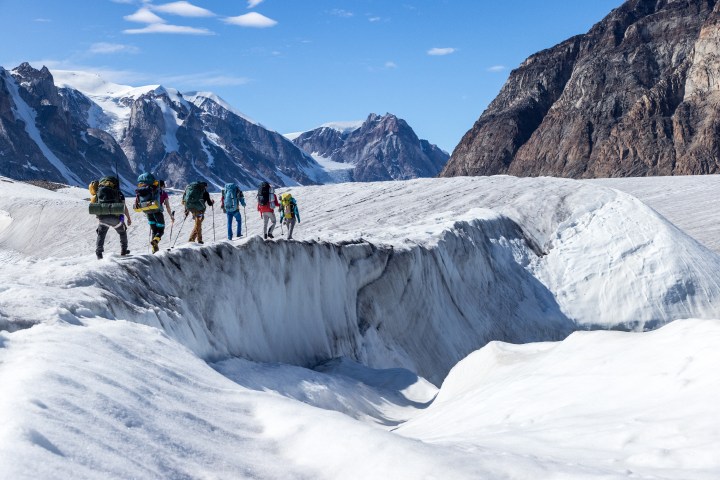
Alex Honnold: Yeah. I mean, I think that’s sort of ongoing … I don’t know. In a way, El Cap provided such a clear purpose and such a clear drive for so many years. I think that having achieved that, probably for the rest of my life, I’ll be left looking for things that are exciting in the right way. I mean, with Arctic Ascent specifically, it was nice to see all the pieces, all the things that I care about, come together into one trip.
It’s like, yeah, we get to do some cool climbing, but cool climbing by itself, you’re like, “Is it worth doing a TV thing [about it]? Is it worth being away from family?” Cool climbing plus a cool glaciologist who can teach us about climate science and then share it with a mainstream audience in a totally remote and fragile ecosystem. Then I’m like, OK, OK. All the pieces are coming together well enough that it starts to feel really worth it.
Climbing El Cap was more of a personal mission and a dream. This new mission, as you explained, is not just about you. It’s about climate research. When did that shift happen in your climbing?
You know, it’s basically an ongoing shift. I mean, I have a foundation. I started the Honnold Foundation in 2012, which supports solar projects around the world. Obviously, I’ve always cared about that work, and I’ve always wanted to do something useful with my life [laughs] because climbing is fundamentally very self-focused. It’s like you’re motivated by your own goals and your own projects, especially with free soloing. Nobody ever even sees it, necessarily. It’s like strictly for you and your own experience, and that’s really satisfying.
But, you’re left wondering if maybe you should do something a little bit better with your time [laughs] or more useful for the world. I think it’s fair to say that I’ve had a steadily broadening consciousness around that kind of thing where it’s like you feel like you should do something. Now, I have a family. I’ve done a lot of things I want to do climbing-wise, and I’m like, I should probably be doing something useful with my time.
On this mission, I know everyone is going to talk about the wall [Ingmikortilaq], and rightfully so, but you took the long route to do all of this research. The first checkpoint was climbing the Pool Wall. I know that was a challenge because you had to take up people who don’t necessarily climb for a living. What was that conversation like when you first approached Heidi like, “Hey, we have to climb this wall. Are you game?”
Heidi and Adam aren’t experienced climbers, but they are incredibly fit. They’re experienced mountain people, and they’re experienced with rope work and things. It’s a little disingenuous to frame them as total novices because they are incredibly strong. You know, they’ve already hiked all the way across Eastern Greenland.
I wasn’t actually that worried about them getting up the wall. I knew they could do it fine because they were just ascending ropes. They didn’t have to do technical climbing per se. They were just ascending and then camping. I knew it would be this big adventure for them. I was pretty psyched. I just knew that if they put the time in, they would eventually sort of grind it out. I mean, it was super fun to have the whole team up there.
It’s a sense of camaraderie that you’re all doing it. It’s got to feel different than just doing something for yourself.
Yeah. The original idea was they could ski around because you could conceivably ski around, but it would take a couple of days. It seemed involved with crevasses and navigating and things. We’re like, it seems a lot more fun to stay together and all have an experience on the wall, especially because I knew that it would be a stretch for them, but not too big a stretch. They’d be able to do it, but it would be awesome, which is the perfect sort of experience.
And then you go right into that 42-mile trek [across Renland Ice Cap]. You don’t realize how mentally and physically exhausted it is. How do you recover mid-trip?
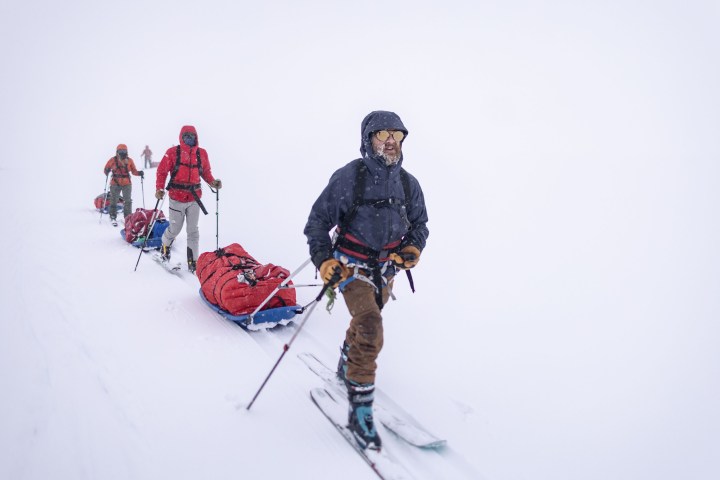
Honestly, I think that this trip was in the sweet spot. It was a six-week expedition, and we basically just went hard for the whole six weeks. I think that had it been much longer than that, we would have broken down. Also, there was enough bad weather throughout the trip that we had rest days built in here and there, just by nature of being stuck in a whiteout or being stuck in storms and raining nonstop.
I think that the weather actually kept us from breaking down physically too much. Also, six weeks is enough that you can kind of try really hard and then go home exhausted. Had it been much longer, we would have gotten really exhausted. [laughs]
Was there any part of the trip where you thought you had to stop?
No. They show the random days where we have to stop in a whiteout, and it’s raining, and things like that. I think there were more days than they show in the film, but obviously, they’re just not going to show another “bad weather day.” Our ascents on the wall sort of get cut together into one climb, but they actually represent six or seven days of going up and down, fixing ropes, and descending back to camp.
A bunch of the days, it would rain the whole morning, and then you’d go up for, like, an hour or two in the afternoon. Then, it would start to snow a little bit, and then you’d retreat back to camp. You’d be like, “Oh, at least we climbed a little bit today. Like, at least we kept pushing our high point.” But you’re like, “Man, it sure is cold here.”
You finally get to Ingmikortilaq. With soloing El Cap, you practiced that route hundreds of times. You knew every move. But this is a first ascent. What’s the preparation for something like this, especially when you haven’t climbed it before?
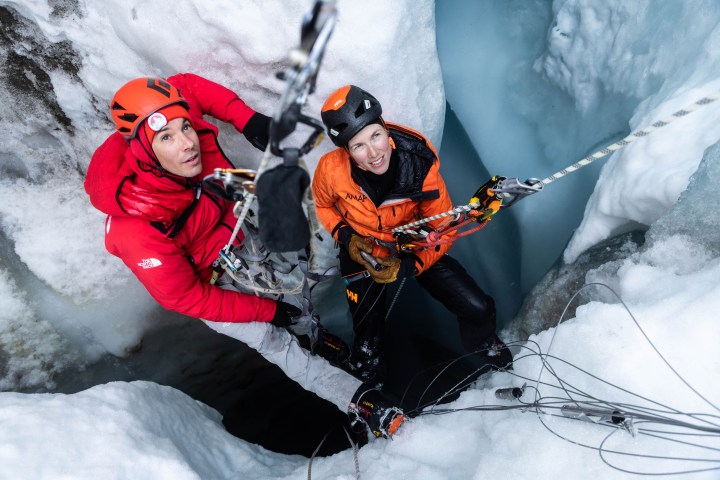
In some ways, you’re not preparing for the climb directly because you can’t. It’s a first ascent. Each of us [Mikey and Hazel, the other professional climbers on the team] has done enough first ascents around the world climbing other types of cliffs that you’re just sort of prepared for anything. You just feel like you’ll show up and figure it out as you go.
I think that the real way you prepare for a climb like that is by assembling the right team and having the right tools with you, whether that’s people or actual hardware or actual equipment. In this case, we were there, we had what we needed, and we were ready for anything.
One of the interesting scenes of this series is when you, Hazel, and Mikey talk after the first day of climbing [Ingmikortilaq]. Mikey decides it’s not worth the risk anymore for him. You’re clearly trying to convince him. You say, “Hey, this might be worth it. Like, I think the risk is worth it.” Was that tough to rationalize and accept [when Mikey stopped climbing]?
Yeah. I mean, my big worry was that Mikey would go home and then feel disappointed that he hadn’t done something. He’d spent six weeks in the middle of nowhere and not had his name on the thing that he was there to do. But something that isn’t really covered in the show is what Mikey did instead, [which was] guide the camera crew up to the summit of the mountain via the other side, and then camp on top and sort of facilitate the logistics to get people filming with me and Hazel.
He’s basically a professional mountain guide, and he’s very good at that kind of thing. He chose to do something else that he’s quite good at that’s safer and more useful for the team and [helped] our own climb. It’s not so much that he was just giving up. He was just choosing a different path where he could contribute in a different way, which was also a much safer way. He was like, “You know what? I feel better about that.” [laughs]
With these huge climbs, you mention in the series that you can really only roll the dice so many times. I mean, how many more times can you roll the dice?
Well, it depends on how much you’re actually rolling. I think that with Arctic Ascent and Ingmikortilaq, I don’t really see that as rolling the dice. I mean, obviously, there is some objective hazard like a loose rock [that could be dangerous]. But those, to me, are sort of background risks that are manageable. I think with big projects like El Cap, that didn’t feel like rolling the dice either, but realistically it is. You know, it’s just much closer to the edge.
Something like Arctic Ascent, I mean, I would do an expedition like this every year if given the opportunity because it’s so gratifying. I learned a lot. I had a good time, great team, [and a] meaningful objective. Everything about it just works for me. It doesn’t feel that dangerous. I would do that each year if I could.
Do you have another expedition lined up for the future?
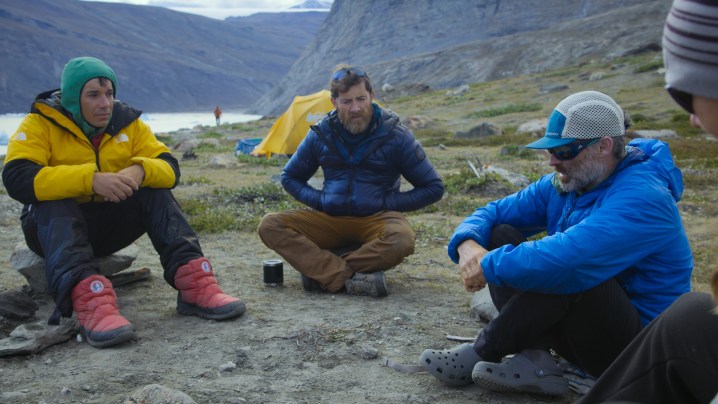
Yeah, we did a trip to Alaska last summer also through National Geographic. That’ll be a show sometime next year or something. Nothing lined up for this year just because, with two different projects in the pipeline, it’s weird to schedule a third one when they haven’t even aired the first one. [laughs]
Arctic Ascent with Alex Honnold premieres at 8 p.m. ET/CT on February 4 on National Geographic. Stream the next day on Disney+ and Hulu.


